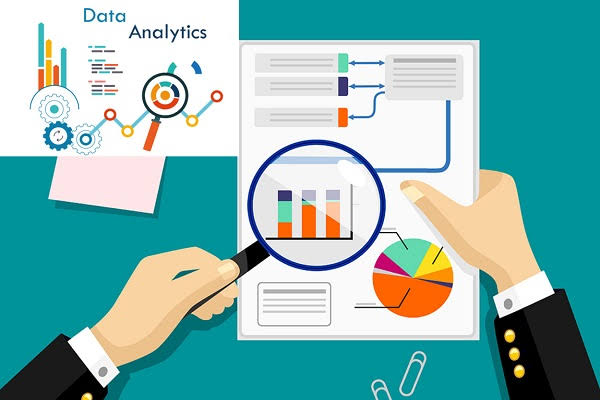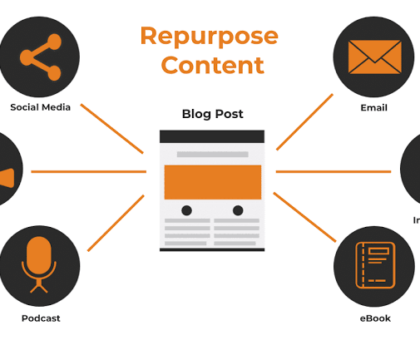
Discover how data analytics can transform content creation, boost engagement, and drive smarter, data-driven content strategies.
Table Of Contents
- Getting Started: The Role of Data Analytics in Modern Content Strategy
- Why Data Analytics Matters in Content Creation
- Key Benefits of Data Analytics for Content Creators
- Types of Data Analytics Tools
- Step-by-Step Guide to Using Data Analytics
- Tips for Interpreting and Applying Data Insights
- Real-World Case Studies
- Conclusion: Elevate Your Content Creation with Data Analytics
Getting Started: The Role Of Data Analytics In Modern Content Strategy

Are you pouring time and effort into creating content only to see minimal engagement or stagnant growth? You’re not alone. Many content creators face this challenge—but there’s a solution. By integrating data analytics into your content strategy, you can produce high-performing, audience-centric content that delivers tangible results. This blog explores how data analytics transforms content creation and sets you on the path to success.
Why Data Analytics Matters For Content Creation
Data analytics is the science of collecting, analysing, and interpreting data to uncover patterns and insights. For content creators, this means understanding what works, what doesn’t, and why. Rather than relying on assumptions, you can use metrics to guide every piece of content you produce.
Without data, content marketing often becomes guesswork. But with data analytics, you gain actionable insights into audience behaviour, preferences, and interaction. This enables improved audience targeting, optimised publishing schedules, and refined content formats—all of which boost engagement and drive sustainable growth.
Key Benefits Of Data Analytics For Content Creators
1. Enhanced Audience Targeting
Using data analytics to assess user demographics, interests, and behaviour patterns allows you to tailor your content for specific segments. Whether your goal is driving website engagement or increasing organic traffic, a deeper audience understanding ensures your message hits the mark.
2. Optimised Content Formats and Timing
By analysing metrics like page views, scroll depth, or social media engagement, creators can determine which types of content—videos, blogs, carousels—resonate most. Tools also reveal ideal posting times across platforms, improving visibility and interaction.
3. Real-Time Performance Tracking
With platforms like Google Analytics or social media dashboards, you can track how content performs the moment it’s live. This allows for real-time strategy adjustments, such as repurposing high-performing formats or tweaking headlines that fall flat.
4. Identifying Content Gaps
Data-driven content strategy helps uncover untapped topics or underperforming areas. This insight leads to content diversification, increased relevance, and better alignment with audience expectations.
Types Of Data Analytics Tools
Google Analytics
Google Analytics tracks user behaviour, traffic sources, bounce rates, and session durations. It helps you see which pages hold interest and which need improvement—critical for improving website content performance.
Social Media Insights
Platforms like Instagram, LinkedIn, and X offer native tools to analyse impressions, likes, shares, and demographics. These insights show which types of content your audience values and how your community is growing.
Content Management Systems (CMS)
CMS platforms like WordPress often include plugins that track engagement, SEO, and readability. These features help refine the user experience and inform future content direction.
Heatmaps and A/B Testing
Heatmaps (e.g., Hotjar) display where users click or scroll, offering a visual view of interaction. Combine this with A/B testing tools to experiment with elements like headlines, images, or CTAs for higher conversions.
Step-By-Step Guide To Using Data Analytics In Your Workflow
- Identify KPIs: Pinpoint the metrics aligned with your goals, like bounce rate for engagement or conversions for ROI.
- Set Up Tools: Connect your website and social accounts to analytics platforms like Google Analytics and Meta Insights.
- Gather Data: Collect information over time to observe patterns and reduce anomalies.
- Analyse Patterns: Use visualisations and reports to spot trends in traffic, shares, or time spent on content.
- Make Adjustments: Refine your strategy based on insights—shift publishing times, change formats, or revisit your CTAs.
- Monitor & Iterate: Regularly check KPIs and tweak content to stay aligned with evolving audience behavior.
Tips For Interpreting & Applying Data Insights
- Compare time periods: Identify growth or drop-offs by comparing week-on-week or month-on-month performance.
- Use visuals: Charts and graphs simplify complex data and help communicate findings to your team.
- Balance your metrics: Don’t rely solely on likes or views—combine them with deeper metrics like time on page or bounce rate.
- Experiment and test: Use data to hypothesise and test content variations. This boosts innovation and creativity.
Real-World Case Studies
- BuzzFeed: Uses real-time content metrics to adjust headlines and post timing, maximising virality.
- HubSpot: Tracks SEO keyword performance using analytics tools, refining blogs for search engine visibility.
- Netflix: Recommends personalised content using user behaviour analytics, improving user retention and engagement.
- The New York Times: Tests multiple headlines to boost click-through rates via tools like Chartbeat.
- Red Bull: Measures branded content performance using analytics across social and web platforms to shape future campaigns.
These examples showcase how data analytics is more than just numbers—it’s the foundation of effective storytelling and content impact.
Conclusion: Elevate Your Content Creation With Data Analytics
In today’s competitive digital space, guesswork simply doesn’t cut it. Leveraging data analytics helps content creators make strategic decisions, understand audience preferences, and deliver more relevant, high-performing content. Whether you’re focused on improving content ROI, increasing digital engagement, or building a stronger brand presence, data should be your creative compass.
So, why wait? Tap into the power of data analytics and elevate your content from good to great—one insight at a time.





